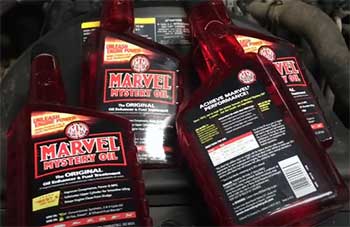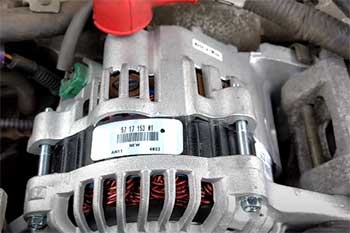I’ve been through my fair share of car batteries, and let me tell you, finding one that’s reliable, durable, and worth the price is no small feat. That’s why I’m sold on Deka batteries. These American-made powerhouses from East Penn Manufacturing have earned their stripes in my garage and on the road.
Whether you’re starting your truck in freezing winters or powering a boat for a weekend adventure, Deka delivers. In this article, I’ll share my experience, break down the pros and cons, compare Deka to other brands, and give you maintenance tips to keep your battery humming.
Trust me, you’ll want one.
My Experience With Deka Batteries
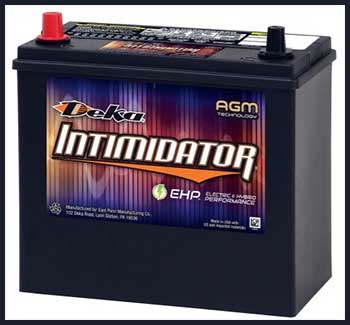
A few years back, I was stuck with a dead battery in my old Chevy Silverado on a frigid January morning.
The OEM battery had given up after barely two years, leaving me stranded in my driveway. Frustrated, I started researching replacements and stumbled across Deka.
I’d heard good things about their AGM batteries, so I decided to give the Deka Intimidator a shot.
It was a group 34/78 dual-terminal battery, perfect for my truck’s heavy-duty needs, with 800 cold cranking amps (CCA) to handle cold starts.
Installing it was a breeze—no special tools required, and the flush cover design meant no worries about spills. The first thing I noticed was the cranking power.
Even on sub-zero mornings, my Silverado fired up like it was summer.
I’ve since put that battery through its paces: long road trips, towing a trailer, and even leaving my lights on overnight (oops). Three years in, it’s still going strong, with no signs of slowing down. I even bought a Deka Power Sports ETX20L for my ATV, and it’s been a champ through muddy trails and long storage periods.
What sold me was the reliability. I’ve never had to jump-start either vehicle since switching to Deka. The AGM technology feels like a game-changer—leak-proof, vibration-resistant, and maintenance-free.
I’ve also noticed it holds a charge better than my old flooded battery, especially during winter months when I don’t drive the ATV as often. My only gripe? The upfront cost was a bit higher than I’d hoped, but the performance has more than justified it.
Honestly, it’s been one of the best automotive investments I’ve made.
Pros of Deka Batteries
- Exceptional Durability
I’ve put my Deka batteries through hell—vibrations from towing, extreme Midwest winters, and even the occasional over-discharge when I forget to unplug accessories. They’ve held up like champs. Deka’s Power-Perform Plate Technology, with full-frame plates, minimizes short-circuit risks and maximizes energy storage.
Independent tests show Deka batteries retain 93% capacity after 500 desert heat cycles, which is better than many competitors. For someone like me, who needs a battery that can take a beating, this durability is a huge win.
- Maintenance-Free Design
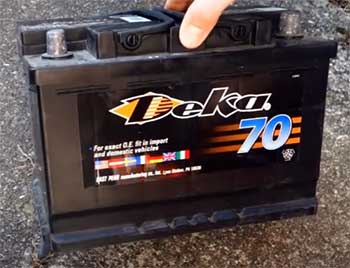
You know what I love? Not having to pop the hood every few months to check water levels.
Deka’s AGM and gel batteries are sealed, spill-proof, and ready to go right out of the box.
This is a godsend for folks like me who aren’t mechanics.
I’ve never had to worry about leaks or corrosion, and the flush cover design keeps things clean.
It’s one less thing to stress about, especially when I’m prepping my boat for a weekend on the lake.
- Impressive Cold Weather Performance
If you live in a place where winter feels like an arctic expedition, Deka’s got your back. Their AGM batteries, like the Intimidator, have low internal resistance and thick lead plates, delivering reliable cranking power in temperatures as low as -40°F.
I’ve started my truck in -20°F without a hiccup, while my old Interstate battery would’ve been toast. Deka’s edge in cold weather makes it a no-brainer for anyone in colder climates.
- Versatility Across Applications
Deka’s lineup is like a Swiss Army knife for batteries. From automotive to marine, RV, and even power sports, they’ve got a battery for nearly every need. I use the Deka Power Sports ETX20L for my ATV, and it’s perfect for deep-cycle demands like winching or long rides.
Their EN Exact Fit series ensures compatibility with specific vehicle requirements, so you’re not stuck guessing if it’ll fit. This versatility means you can trust Deka whether you’re powering a car, boat, or lawnmower.
- Eco-Friendly and Recyclable
I’m no tree-hugger, but I appreciate that Deka emphasizes sustainability. Their batteries are recyclable, and East Penn Manufacturing has a solid track record for eco-friendly production. Knowing my battery choice isn’t adding to the landfill pile gives me a bit of peace of mind.
Plus, their long lifespan means fewer replacements, which is better for both my wallet and the planet.
- Reliable Warranty and Support
Deka’s warranty terms are solid, ranging from 18 to 42 months depending on the battery type. I’ve never had to use it, but friends who’ve dealt with Deka’s customer service rave about the expertise and quick response.
Unlike some brands that make you jump through hoops, Deka honors warranties through any authorized dealer, which is super convenient if you’re on the road.
Not-So-Good Parts of Deka Batteries
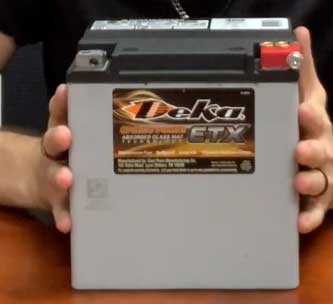
- Higher Price Point: Let’s be real—Deka batteries aren’t cheap. When I bought my Intimidator, I winced at the price tag, which was about 20% more than a comparable Interstate or NAPA battery. For budget-conscious folks, this can sting, especially if you’re replacing multiple batteries. That said, I’ve found the longevity and performance make up for the upfront cost over time. If you’re pinching pennies, though, you might hesitate.
- Limited Availability: Finding a Deka battery can be a hassle depending on where you live. Unlike Interstate, which is at every Costco and AutoZone, Deka’s distribution network is smaller. I had to order mine online through a specialty retailer, which added a few days of waiting. NAPA stores carry Deka-made batteries, but they’re rebranded, so you might not get the exact Deka model you want. If you need a battery ASAP, this could be a pain.
- AGM Sensitivity to Charging: AGM batteries, like many Deka models, are picky about charging. I learned this the hard way when I used a cheap charger on my ATV battery and noticed it wasn’t holding a charge as well. You need a smart charger, like a CTEK, to avoid under- or overcharging. It’s not a huge deal, but if you’re not used to AGM batteries, it’s an extra step to keep in mind.
- Shorter Lifespan for Some Models: While my Deka batteries are still kicking after three years, some models, especially flooded ones, have a shorter lifespan of 12-30 months. That’s less than the 3-4 years you might get from NAPA or AutoZone batteries. Proper maintenance can stretch this to 5-8 years, but it’s not guaranteed. If you’re expecting every Deka battery to last a decade, you might be disappointed.
- Compatibility Concerns: Not every Deka battery is a universal fit. I had to double-check my Silverado’s group size (34/78) to ensure compatibility. If you pick the wrong model, you’re out of luck. Their EN Exact Fit series helps, but it’s still on you to know your vehicle’s specs. For someone like me who’s not a gearhead, this added a bit of stress during the purchase process.
Maintenance Tips For Deka Batteries
- Keep It Charged Properly
Your Deka battery, especially if it’s AGM, needs a smart charger. I learned this after nearly ruining my ATV battery with a cheap charger. Use a CTEK or similar smart charger to avoid over- or undercharging, which can cut lifespan.
Charge it fully after each use, and if you’re storing it for months, like I do with my ATV in winter, hook it up to a trickle charger to maintain a 100% state of charge. This keeps the battery healthy and ready to go.
- Check Terminals Regularly
Even though Deka’s AGM batteries are maintenance-free, I still check the terminals for corrosion every few months. A quick wipe with a baking soda-water mix keeps things clean. I’ve noticed my Silverado’s battery stays corrosion-free thanks to the flush cover, but it’s still worth a glance.
Loose connections can also sap performance, so tighten them if needed. This takes five minutes and saves you headaches.
- Avoid Deep Discharges
I made the mistake of letting my ATV battery drain too low once, and it took a toll. Deka’s deep-cycle batteries can handle more discharge than standard ones, but don’t push it. If you’re using accessories like winches or stereos, keep an eye on the voltage.
A battery monitor (I got a cheap one for $20) helps you avoid draining below 50%. This extends lifespan significantly.
- Store in a Cool, Dry Place
When I store my ATV battery over winter, I keep it in my garage at around 50°F. Extreme heat or cold can degrade batteries, even Deka’s all-weather models. Avoid direct sunlight or damp areas, as moisture can cause issues. If you’re storing for months, check the charge every 6-8 weeks and top it off if it drops below 80%.
This keeps your battery ready for spring.
- Know Your Battery’s Specs
Deka batteries have a date code (a letter for the month, A-M, and a number for the year) stamped on them. I check this to track age—my Intimidator’s code was “C23” (March 2023). Knowing the age helps you plan replacements before failure.
Also, match the battery to your vehicle’s group size and CCA requirements. I double-checked my Silverado’s specs to avoid compatibility issues, and it’s saved me from costly mistakes.
- Test Periodically
I bought a TOPDON BT100 battery tester for $50, and it’s been a game-changer. Test your battery every 6 months, especially as it nears the warranty period (18-42 months for Deka). This catches weak performance early.
My Deka batteries have consistently tested above their rated CCA, which gives me confidence they’ll last. If you’re not sure how to test, most auto shops will do it for free.
Comparison of Deka Battery With Other Brands
I’ve tested or researched plenty of batteries, and Deka’s up against some tough competition: LiTime, TotalPro, and Optima. Here’s how they stack up, based on my experience and digging into user feedback and specs.
- Deka Vs. LiTime Battery
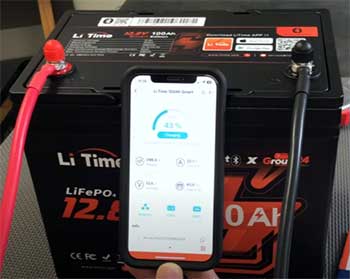
LiTime specializes in lithium-ion batteries, which are lighter and have a longer lifespan than Deka’s lead-acid or AGM options.
I considered a LiTime 12V 100Ah LiFePO4 for my RV, and it’s tempting—50% lighter than my Deka Intimidator and rated for up to 10 years.
But LiTime’s upfront cost is steep, often 2-3 times Deka’s price for similar capacity.
Deka’s AGM, with 800 CCA, outperforms LiTime’s 300-400 CCA in cold cranking, crucial for my truck in Midwest winters.
LiTime’s batteries also require a specific charger and battery management system, which adds complexity. Deka’s simplicity and reliability make it my pick for automotive and marine use, while LiTime suits off-grid or weight-sensitive setups.
- Deka Vs. TotalPro Battery
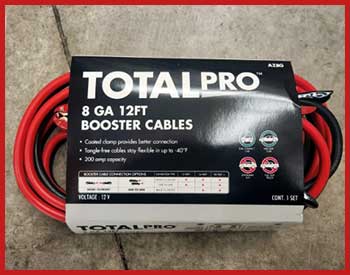
TotalPro batteries, often found at discount retailers, are budget-friendly and decent for basic automotive needs.
I used a TotalPro in my old Civic, and it lasted about three years for daily commuting. However, its 600 CCA struggled in cold weather, unlike Deka’s 800 CCA, which powers my Silverado through -20°F starts.
TotalPro’s flooded batteries require regular maintenance, like topping off water, while Deka’s AGM is maintenance-free. TotalPro’s warranty is shorter (12-24 months vs. Deka’s 18-42 months), and user reviews note inconsistent quality.
Deka’s durability and performance edge out TotalPro for anyone needing more than a basic commuter battery.
- Deka Vs. Optima
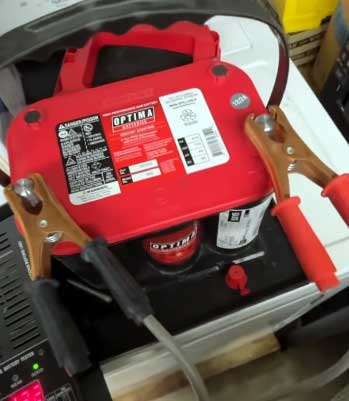
Optima’s RedTop and BlueTop batteries are legendary for high-performance applications.
I tested an Optima BlueTop for my boat, and its 750 CCA outmuscles Deka’s marine equivalent at 310 CCA.
Optima’s spiral-cell AGM design is top-notch for vibration resistance, ideal for rough waters or off-roading.
But here’s the rub: Optima’s price is 30-40% higher than Deka’s, and for casual boaters like me, Deka’s marine batteries get the job done without breaking the bank.
Both are maintenance-free, but Deka’s broader lineup, including power sports options like my ETX20L, gives it more versatility.
Optima’s great for extreme performance; Deka’s better for balanced value.
In the end, Deka shines for its reliability and versatility across automotive, marine, and power sports applications. LiTime’s lithium-ion edge is great for specific use cases, TotalPro’s budget-friendly but lacks staying power, and Optima’s premium performance comes at a premium price.
For most drivers and outdoor enthusiasts like me, Deka’s balance of quality, durability, and cost makes it a top choice.
Frequently Asked Questions (FAQ)
Deka batteries typically last 3-5 years with proper maintenance, though some, like AGM models, can reach 5-8 years. My Intimidator is at three years and counting, with no signs of slowing. Lifespan depends on usage, climate, and charging habits—avoid deep discharges and use a smart charger to maximize it.
Deka batteries are made by East Penn Manufacturing, a family-owned company based in Pennsylvania since 1946. They’re known for in-house production, ensuring quality control. I’ve been impressed by their reputation for reliability and innovation.
Not exactly, but they’re close cousins. Both are made by East Penn Manufacturing, but NAPA batteries are private-labeled for NAPA Auto Parts stores with standardized warranties (usually 36 months). Deka’s flagship line offers tiered warranties and more specialized options for marine or RV use. I’ve used both and found them similar in performance, but Deka’s broader range gives it an edge for specific needs.
It’s tough to crown one brand, but Deka, Interstate, and Optima are top contenders. I lean toward Deka for its durability and versatility, especially in extreme conditions. Interstate’s great for accessibility, and Optima shines for high-performance needs. For my money, Deka’s balance of quality, longevity, and value makes it the most reliable for most drivers.
Wrapping Up
After years of using Deka batteries in my truck and ATV, I can say they’re worth every penny. Their durability, cold-weather performance, and versatility make them a standout choice for anyone needing reliable power. From maintenance-free designs to eco-friendly production, Deka checks all the boxes.
Whether you’re hitting the road or the trails, you can trust Deka to keep you going. Don’t settle for less—grab a Deka battery and experience the difference for yourself. Your vehicle (and your peace of mind) will thank you.
